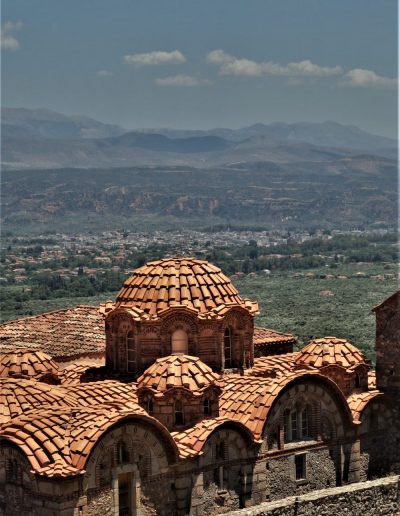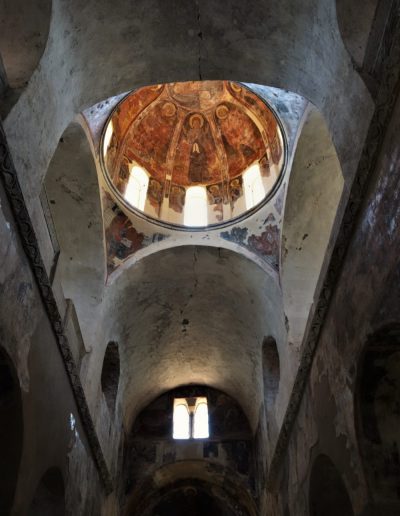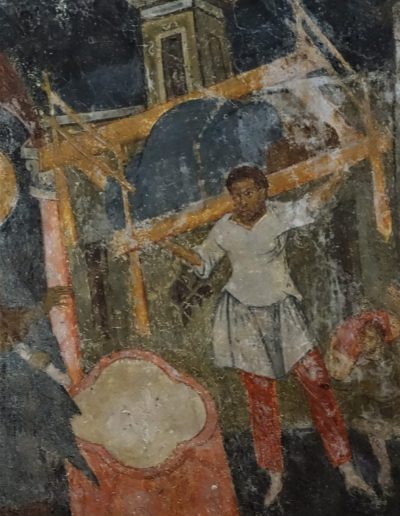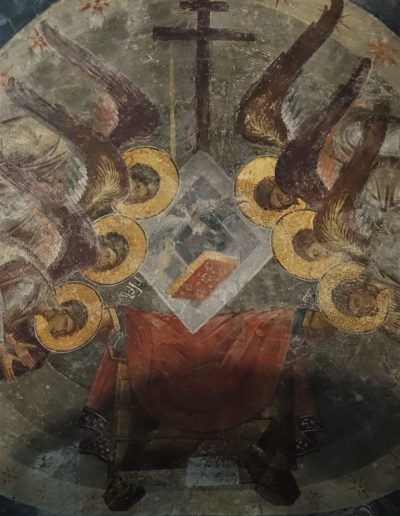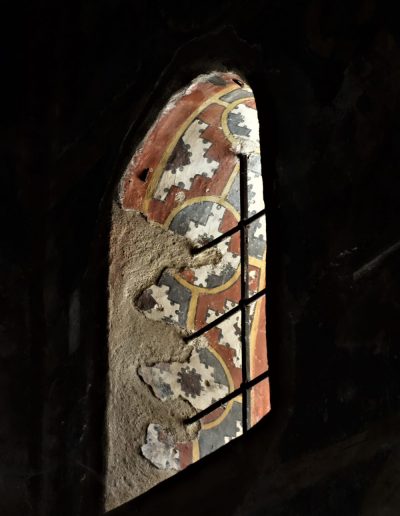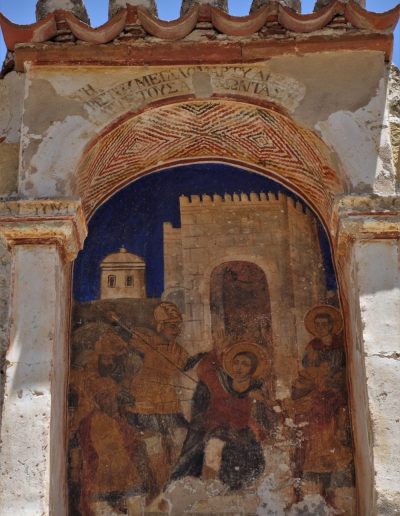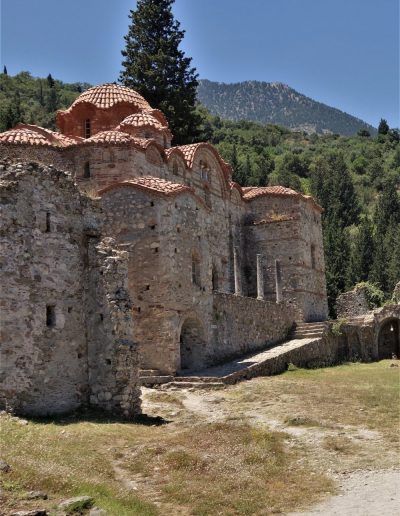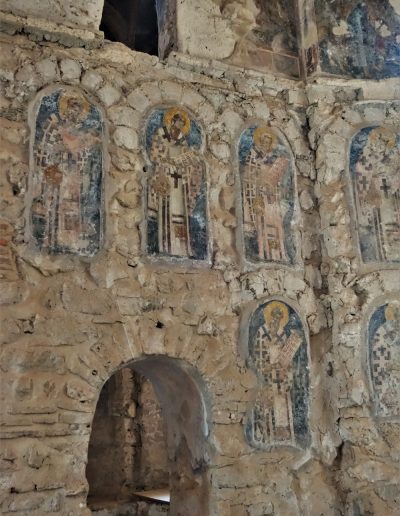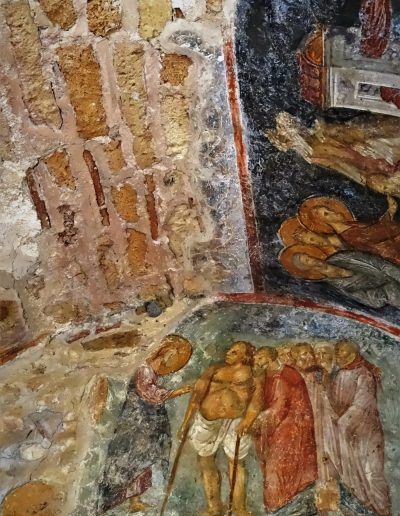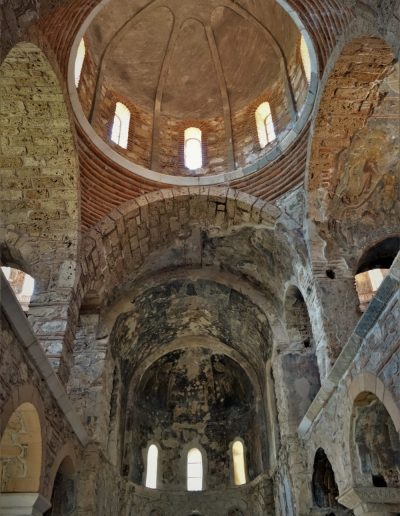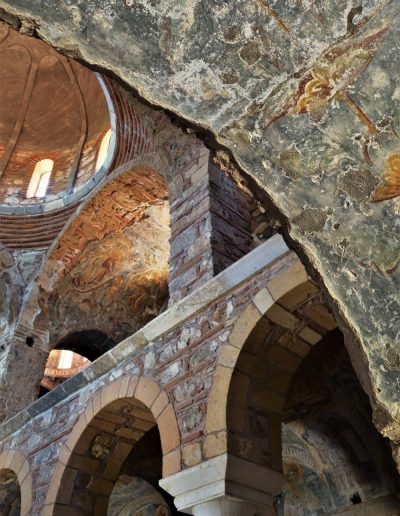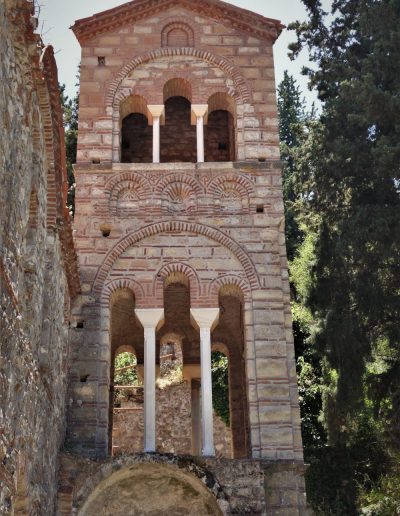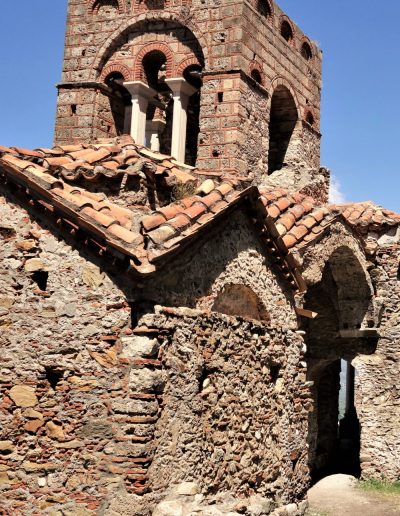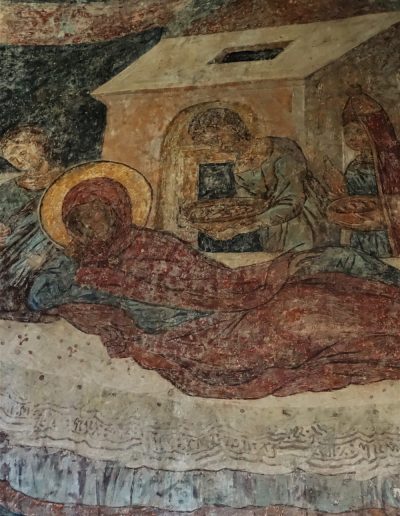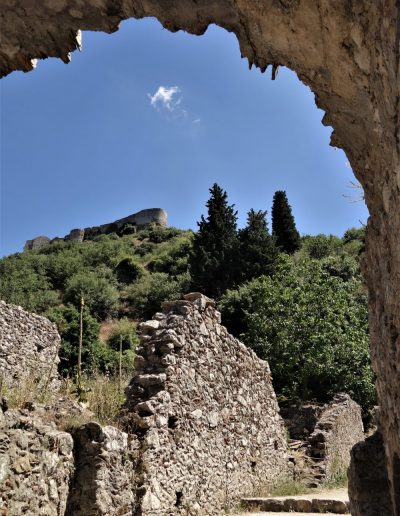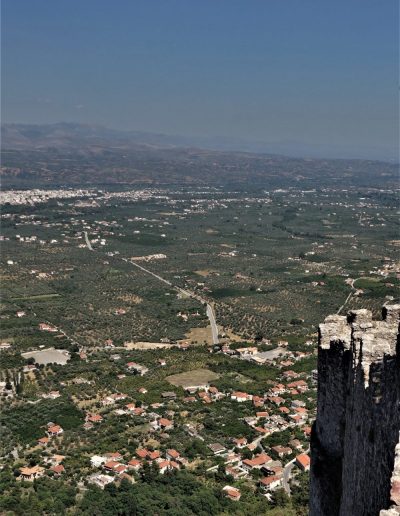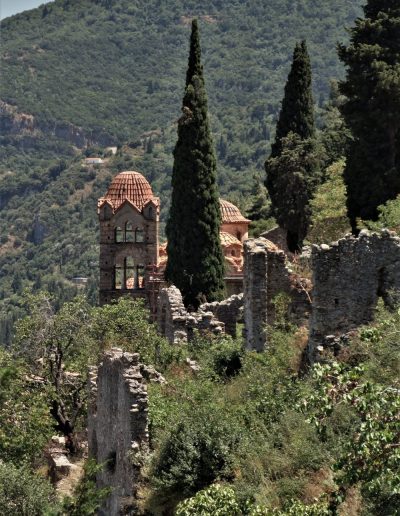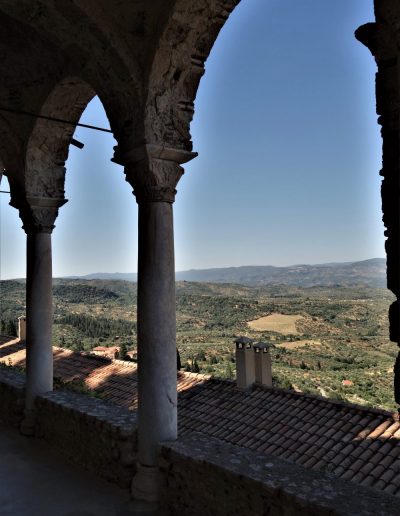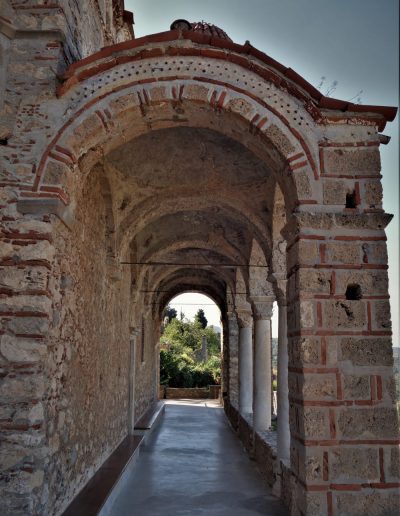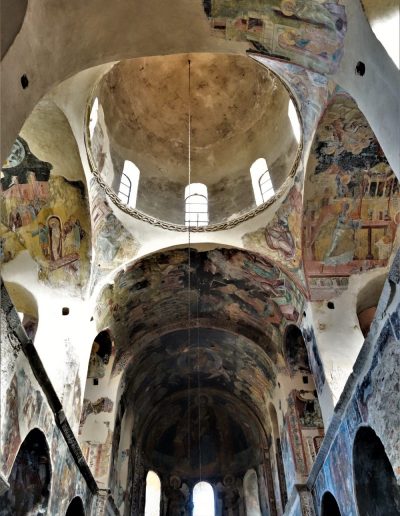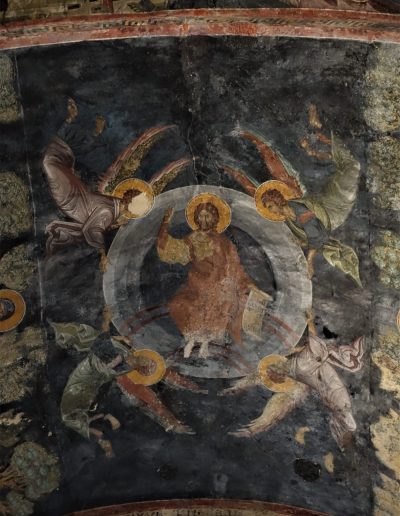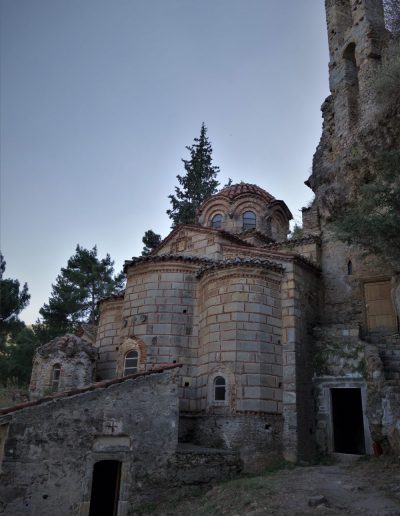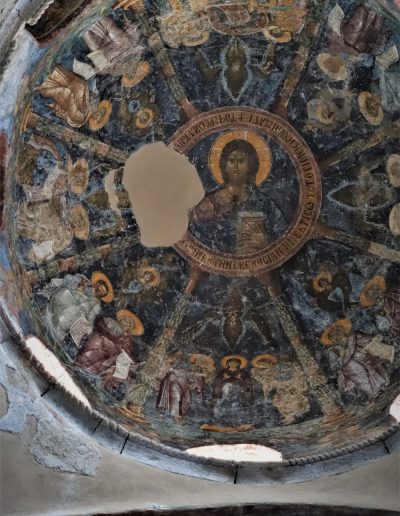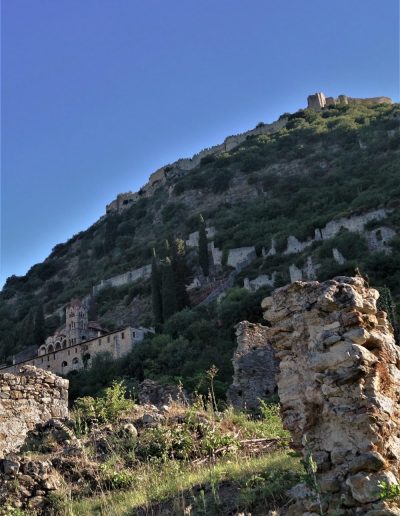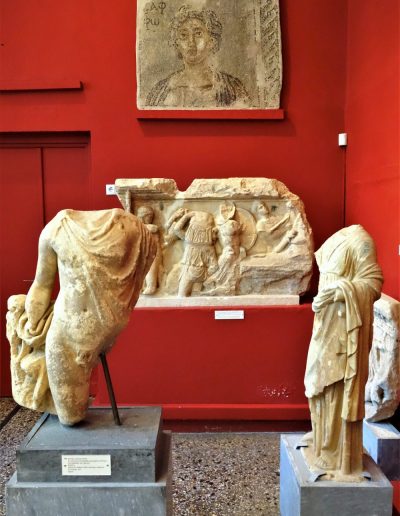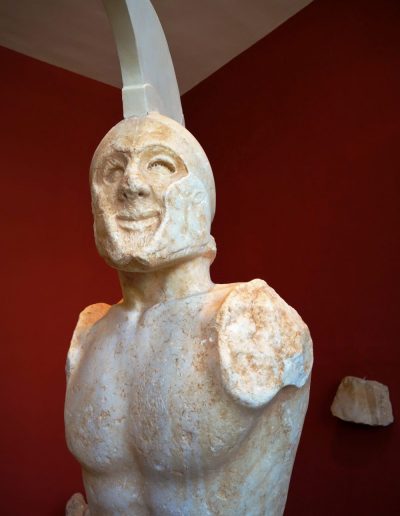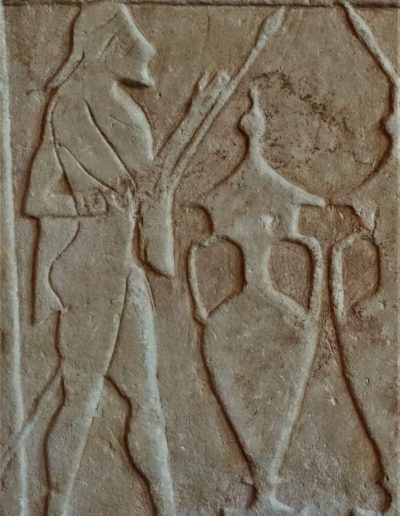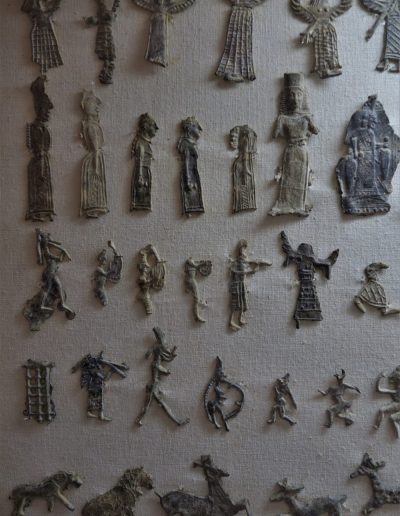- The World Heritage archaeological site of Mystras preserves the remains of a city with a remarkable six hundred year history, from its founding in 1248 to its abandonment in 1832 at the end of the Greek War of Independence .
- After the Fourth Crusade in which Constantinople was sacked and the Byzantine Empire defeated, its lands were divided up under the so-called ‘Latin Empire’. These lands included the Principality of Achaea which basically covered the Peleponnese, also known as Morea. The Frankish Prince of Archaea, William II of Villehardouin, toured the region in 1248 and chose the top of a 310 metre high spur of Mount Taygetos to build his fortress which became the city of Mystras. The Latin Empire only lasted till 1261 but Mystras became the seat of the governor of the Byzantine territories in Morea. It flouished under the Byzantine scholar George Gemistus Pletho (1355-1452) who was instrumental in the revival of Greek scholarship in Western Europe, which had a profound effect during the Rennaissance. Mystras declined from 1460 when it was surrendered to the Ottomans, but flourished again when occupied by the Venetians from 1687-1715. The Ottomans recaptured it in 1715 and then it was burnt by the Russians in 1770, the Albanians in 1780, and the Turks again in 1825. It was abandoned in 1832 when the modern city of Sparta was established by King Otto.
- The site is dominated by Villhardouin’s castle at the top, with an Upper City, Middle City and Lower City spilling down the slopes. The major building complexes we visited were the Meteropolis/ Agios Demetrius, Hodegetria, St Sophia, Villehardouin’s Castle, Patanassa, and Peribleptos.
- We were walking the site until 19:00 so it was great to just drop down to the local village of Mystras where we’d booked a room for the night. Freshened up, ate dinner, and slept very well. A magnificent day.
- Left Mystras next morning and stopped in Sparta en route to Nafplio.
- We’ve all heard of the Spartans but there’s precious little left of their ancient city. It sits on a plain and the fearless Spartans eschewed walls and fortifications, preferring to back their fighting prowess. Obviously that didn’t end well. The modern city of Sparta was founded in 1834 on the instruction of King Otto, the first King of Greece. With Athens being rebuilt after independence he believed that Sparta should be rebuilt as well. It was a laudable idea but never actually happened. We visited the Sparta Archaeological Museum which has a quaint, yesteryear feel.
- Drove east to the coast then north towards Nafplio, stopping at Astros for a swim and lunch.

